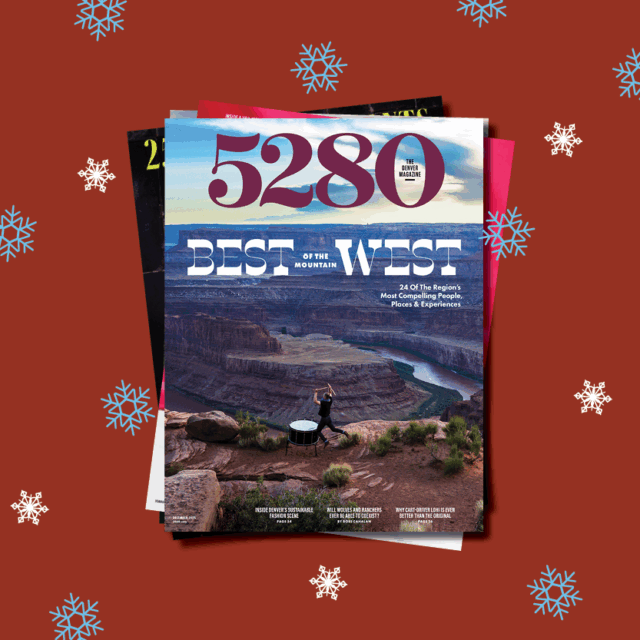The Local newsletter is your free, daily guide to life in Colorado. For locals, by locals.
It’s only 11 words, but a proposed change to the Colorado Constitution could make the Centennial State’s property law the most extreme in the nation.
Amendment 74, which will be on the November ballot, would require state and local governments to compensate private property owners when laws or regulations reduce the “fair market value” of their private property. Despite the minuteness of the verbiage, the change is far from small, according to Georgetown University property law professor J. Peter Byrne. In fact, Byrne says that kind of compensation would represent an extreme departure from conventional private property law in the United States.

“There’s no provision in the country like it, in the sense that it requires payment for all reductions in market value, which is really crazy because it doesn’t even have an exception for nuisances,” Byrne says, adding that strong property rights states do have such an exception. “If somebody is using their property for, you know, some purposes that are dangerous for the people near them and the government requires them to stop, they [would under Amendment 74] have to get paid to stop…the government [would have] to buy from owners their inclination to use their property for purposes that injure their neighbors.”
The opposition to Amendment 74 is widespread. On September 26, Denver Mayor Michael Hancock joined more than 100 elected officials who’ve denounced the bill. The Denver City Council openly voiced its disapproval last week by unanimously passing a proclamation urging voters to reject the measure. Colorado Municipal League, an association of more than 200 local governments in Colorado; Boulder County Commission, Broomfield City Council, Denver Metro Chamber of Commerce, the Sierra Club of Colorado, Conservation Colorado, and Club 20, an association of business and government leaders from Colorado’s Western Slope, have also openly criticized the amendment.
What Does the Amendment Do?
Currently, Section 15, Article H of the Colorado Constitution reads “Private property shall not be taken, or damaged, for public or private use, without just compensation.” This generally refers to incidents of eminent domain, or something called regulatory taking, where private property owners might be eligible for compensation from the government if they can prove that regulations reduced the value of their private property to near obliteration.
The proposed amendment would add 11 words to this segment of the constitution, so it would read: “Private property shall not be taken, or damaged, for public or private use, or reduced in fair market value by government law or regulation, without just compensation.”
Opponents claim the language is so broad that it could limit or make impossible regular functions of local government, as well as burden taxpayers with tremendous costs of litigation and compensation for private property owners. Proponents—many of them of oil and gas interests—say the change bolsters private property rights.
Governments Impact Private Property Values All the Time
At last week’s Denver City Council meeting, councilmembers bemoaned the opacity of the proposed language, calling out its potential to make routine government action extremely costly or impossible.
“This measure is a killer for the community’s ability to regulate land use in their own backyards,” said Councilmember Kevin Flynn (District 2), pointing out that any action the city takes could be subject to litigation. Routine land-planning decisions by the government impact the fair market value—a nebulous term in its own right—of virtually all private property.
Sam Mamet, executive director of the Colorado Municipal League, says Amendment 74 risks fundamentally changing how local governments in Colorado operate. “Land-use planning at its core involves a city council, a town board, a county commissioner board, balancing viewpoints,” Mamet says. “It’s not all black and white. When there are basic decisions about how a city should grow, about the character of a neighborhood, about the development of a particular part of the city, it’s a balancing act. Do you want that balance tilted? That’s what Amendment 74 does.”
Who Is Supporting Amendment 74?
Amendment 74 has the backing of oil and gas companies like Anadarko Petroleum Corporation, the Colorado Petroleum Council, and Noble Energy Incorporated via the committee Protecting Colorado’s Economy, Environment, and Energy (known as Protect Colorado). The group has amassed more than $25 million to advocate for Amendment 74 and against Proposition 112, a proposal that will also appear on the statewide ballot this November. If approved by voters, 112 would establish a half-mile setback (or buffer zone) between new oil and gas developments and populated areas, like houses, schools, or parks.
Chad Vorthmann, one of 74’s designated representatives and executive vice president of the Colorado Farm Bureau, said in an article posted in the Fence Post earlier this year that Amendment 74 would protect private property owners who want to frack within a half mile of populated areas—a contentious issue in recent years on the Front Range—even if 112 were to pass.
“These measures are about protecting Colorado’s farmers and ranchers from extremist attempts to enforce random setback requirements for oil and natural gas development,” he’s quoted as saying in the article. “While these setbacks may on their face sound reasonable, they would essentially eliminate oil and natural gas development in Colorado and strip away Colorado landowners’ right to use their land the way they wish.”
Vorthmann told 5280 that Amendment 74 is at its core about protecting private property rights, a broader issue than an oil and gas company’s or private landowners’ rights to frack their properties within a half-mile of populated areas. If the government reduces the market value of someone’s property for the greater good, he says, “then maybe they ought to be compensated.”








